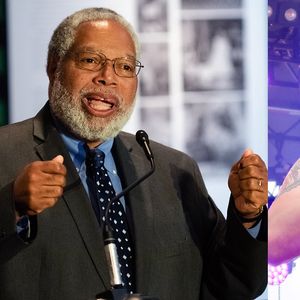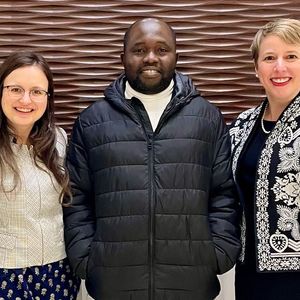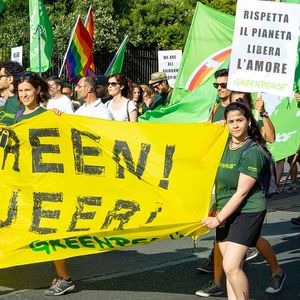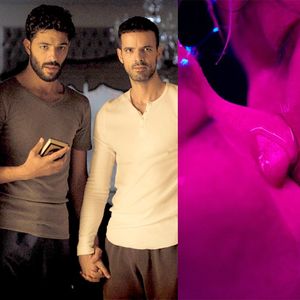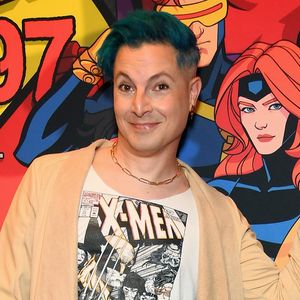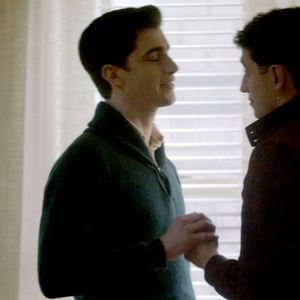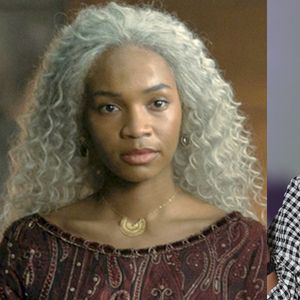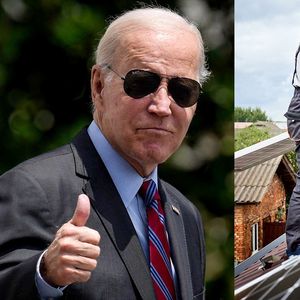
Treatment GuideJust DiagnosedSex & DatingAfrican AmericanStigmaAsk the HIV DocPrEP En EspañolNewsVoicesPrint IssueVideoOut 100
CONTACTCAREER OPPORTUNITIESADVERTISE WITH USPRIVACY POLICYPRIVACY PREFERENCESTERMS OF USELEGAL NOTICE
© 2024 Pride Publishing Inc.
All Rights reserved
All Rights reserved
By continuing to use our site, you agree to our Private Policy and Terms of Use.
A hidden sanctuary lies at the eastern end of San Francisco's Golden Gate Park, where 71/2 acres of meandering paths and sloping hills lead to a secluded meadow. Surrounded by pine, redwood, Monterey cypress, and maple trees, this bucolic plot holds an almost mythic, otherworldly power in the minds and hearts of the people who love and care for the space. Twenty years ago it was a largely forgotten mass of dilapidated dirt and brush, known as the deLaveaga Dell, that the city could not afford to maintain. Then a group of volunteers, looking for a place to channel their grief over the AIDS crisis that was so devastating their community, raised private funds, rolled up their sleeves, and turned the land into a memorial to those lost to the disease. With Rep. Nancy Pelosi as its champion in Congress, the National AIDS Memorial Grove, as it is now known, was recognized as a national memorial in 1996, one of only two in California.
WATCH THE TRAILER TO FORGET ME NOT:
In an upcoming documentary about the National AIDS Memorial Grove, Pelosi reflects on how from the passion and commitment of these trailblazers "there emerged this magnificent grove. And then we had this work of nature that really resulted from the grief and sadness of many, converted into a beautiful memorial of remembrance and renewal."
Directed by Emmy-nominated filmmaker Andy Abrahams Wilson, Forget Me Not hopes to bring the national attention that is due to a memorial of the AIDS Grove's stature. Wilson's film, which is nearing completion as he seeks additional funding, will trace the memorial's nascent years to its present, chronicling the stories of those whose lives cross paths in the park: friends, family, and loved ones of those who have died; people infected and affected alike by HIV.
Wilson, who was himself unaware of the AIDS Grove before the memorial's organizers approached him about creating the film, is enthralled by a place he said provides a poignant, Buddhist-like reflection on life, loss, and ultimate regeneration through nature. The AIDS Grove's upkeep, he points out, largely falls to a group of volunteers who get their hands dirty and find solace through tending the earth and ultimately watching beautiful things grow. Their personal involvement with the space, he says, is unique and sets the site apart from the impassive stone of the Vietnam Veterans Memorial, Mount Rushmore, or Grant's Tomb.
"When we see that process in nature, we see the death," says Wilson, "and we see the regeneration. It's a healing. It's a coming full circle."
"I've been scarred by AIDS, and I'm a survivor," he continues, telling of having lost many friends and a former lover when living in San Francisco in the early 1990s. "The AIDS Grove is also a place for me."
"The film, while it discusses how to memorialize AIDS-it's also a discussion about memorial in general," he explains. Our current political climate, he adds, begs for a national dialogue about how we cope with death: "I call it a post-AIDS AIDS film. In a time of loss, what do we do with our grief? That's pertinent right now, with the war, with the memorial at Ground Zero. We've gone through this period of crisis. So this is a way of really finding healing."
Want more breaking equality news & trending entertainment stories?
Check out our NEW 24/7 streaming service: the Advocate Channel!
Download the Advocate Channel App for your mobile phone and your favorite streaming device!
From our Sponsors
Most Popular
Before AIDS, gay artist Rex drew hot men on the prowl — then he disappeared
April 11 2024 3:15 PM
Diets that mimic fasting reverse aging: study
March 07 2024 5:28 PM
The Most Amazing HIV Allies & Advocates of 2023
November 03 2023 12:51 PM
PrEP without a prescription now a reality in California
February 06 2024 8:37 PM
This OnlyFans Star Is Trying to Raise $100K to Fight HIV
December 26 2023 3:05 PM
Injectable HIV treatment, prevention: Everything you need to know
March 26 2024 3:28 PM
The naked Black body takes center stage in this HIV campaign
January 03 2024 1:07 PM
8 dating tips for gay men from a gay therapist
March 21 2024 2:50 PM
Mr. Gay World wants to make sure you're OK
January 02 2024 4:56 PM
Plus: Featured Video
Latest Stories
The government failed on mpox. Ritchie Torres's new bill addresses that
April 18 2024 1:21 PM
On Anal Sex Day, crack up with The Bottom's Digest
April 18 2024 10:22 AM
Todrick Hall has long supported the communities he comes from
April 17 2024 12:02 PM
Our May/June issue of Plus is here!
April 17 2024 12:00 PM
Giselle Byrd is taking center stage — and helping others do the same
April 10 2024 2:24 PM
Discover endless fun at The Pride Store: Games & electronics for all ages
April 09 2024 4:25 PM
Mean Girls' Daniel Franzese on playing an HIV+ character
April 09 2024 3:57 PM
HIV-positive Air Force, Navy servicemembers victorious in lawsuit
April 09 2024 3:02 PM
Unlocking a new level of beauty with Dr Botanicals' ethical skincare line
April 08 2024 3:40 PM
Unleash your wild side with The Pride Store’s beginner’s guide to kink
April 08 2024 3:35 PM
Why are mpox cases in the U.S. on the rise again?
April 08 2024 1:30 PM
Happy national foreskin day!
April 04 2024 1:45 PM
Adult entertainment icons Derek Kage & Cody Silver lead fight for free speech
April 03 2024 3:06 PM
LGBTQ+ patients twice as likely to face discrimination: survey
April 02 2024 4:57 PM
Spring into The Pride Store’s top new arrivals for April
April 02 2024 4:39 PM
Nashville PD Must Pay HIV-Positive Man Denied a Job
April 01 2024 6:22 PM
Common has a message on how to foster self-love
March 29 2024 7:33 PM
Listen to Dr. Levine: Take syphilis seriously
March 28 2024 6:40 PM
Breaking boundaries in gender-free fashion with Stuzo Clothing
March 27 2024 2:15 PM
































